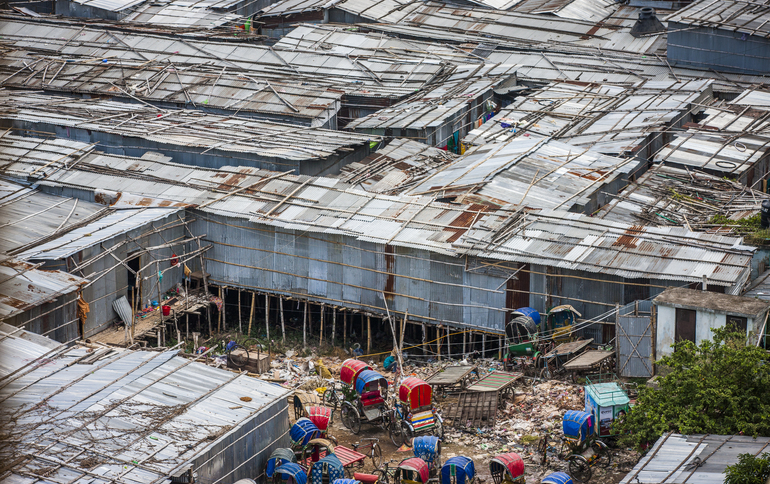World Habitat Day 2020: Revitalising Housing for All Agenda in the Era of COVID-19

The COVID-19 crisis presents a unique opportunity to rethink how our cities and towns are designed and re-imagine ways to make them better-equipped to curb disease outbreaks from the get-go. The inevitable urban reality which we have already embarked on has brought about a wave of change, exposing the tattered state of the poor and causing the emergence of a ‘new poor’ in the cities. It may have a consequential multiplier effect, if not reversed through a proactive course of correction that offers affordable housing solutions to low-income communities.
Formal private housing supply is limited in Bangladesh, forcing low and middle-income families to resort to costly informal arrangements. With current growth patterns, Bangladesh needs at least 8.5 million new houses by 2021, mostly for lower-income groups. Given the country’s commitments to providing housing for all by 2021, how can these demands be met when the situation has been further aggravated by COVID-19?

The pandemic raised important questions: are ‘stay-at-home’ policies a realistic option for the homeless, or a five-member family living in a ten-by-twelve, one-room shanty? Can high-density slum settlements exist in cities and towns post-pandemic? It is high time we pursue a pragmatic model of sustainable urban development through redesigning the housing landscape that caters to the future needs of all income groups. The pandemic has forced us to stay home, but it has also strengthened community resilience and social cohesion in many ways.
Government of Bangladesh (GoB) agencies are implementing programmes in line with Honourable Prime Minister Sheikh Hasina’s vision to provide housing to all, particularly for the rural people. However, the urban poor lack such high-level policy favour and support from the concerned organisations, both private and public. Despite the dismal situation, Bangladesh’s NGOs, professional bodies, private sector, and development partners are discreetly testing small-scale, affordable urban housing schemes.

The Gopalganj Model of social housing is an example of ‘Partnership and Community-Driven Cooperation Approach’ during Urban Partnership for Poverty Reduction (UPPR) project implemented by UNDP with GoB, funded by the FCDO, former DFID. This approach pioneered community empowerment with access to social housing and affordable finance. Based on the successful dividend of UPPR, the next-generation urban poverty reduction programme LIUPCP (Livelihoods Improvement for Urban Communities Project) is being implemented by UNDP in collaboration with GoB and funded by FCDO. The National Housing Authorities’ (NHA) Low-Income Community Housing Project financed by the World Bank has also started. Here is a link for more details on the other models.

Affordable housing for urban low-income groups, big or small, is difficult to run without introducing inclusive finance schemes. GoB-UNDP-FCDO, through their urban flagship project named UPPR, had tested the community-managed savings group known as CHDF (Community Housing Development Fund), which has shown great promise. Families still get housing and income generation support, even after UPPR concluded in 2016. The experiments in low-income housing provide some obvious answers for overcoming challenges that can be further explored as COVID-19 has taught us again that housing cannot merely be considered a material structure.

Pragmatic policy measures and market-led innovative solutions (e.g. rental housing, blended finance) for both design and financing can not only prevent less-advantaged groups from becoming homeless in cities but also incubate their true working potential. For this, Bangladesh needs more viable and scalable business models supported by enabling policy framework along with institutions steadfast to warranting a better urban future. Shared responsibility and a conducive ecosystem for public-private-people partnerships are also critical to provide inclusive and affordable ‘housing for all’.
